If you haven’t celebrated Chinese New Year before, you’re missing out on a great festival! Every year, families get together to celebrate the new year and wish each other good luck for the coming year. There’s plenty of food and festivities, and it’s a wonderful way to spend time with loved ones.
Don’t know what to savor this Lunar New Year? We’ve got you covered with all the details you need right here!
What is Lunar New Year and when is it celebrated?
Lunar New Year, also known as Spring Festival in China, is one of the most celebrated holidays in the world. Unlike other holidays which have a fixed date, it is determined by the Chinese lunar calendar and falls on either January 21st or February 20th each year. On this day, millions of people around the world exchange red envelopes, share meals with family and partake in meaningful traditions that have been passed down for centuries.
What are some of the traditional foods eaten during this time period and what’re the symbolic meanings?
Every year, Lunar New Year is celebrated with a joyous gathering of friends and family to share traditional dishes. Most popular on the share table are items such as noodles for longevity, dumplings for prosperity, and sticky rice cake for unity. The share plates continually fill up with delectable flavours – from spring rolls, chicken to fish – all cooked and enjoyed together.
Fish – Abundance
In the Chinese language, “fish” (鱼 Yú /yoo/) sounds like ‘surplus’, and is consequently a common food served during the Lunar New Year. For many Chinese people, having leftovers at year’s end symbolizes abundance in the new one to come; if they have managed to save something during that time, then surely more successes will follow.
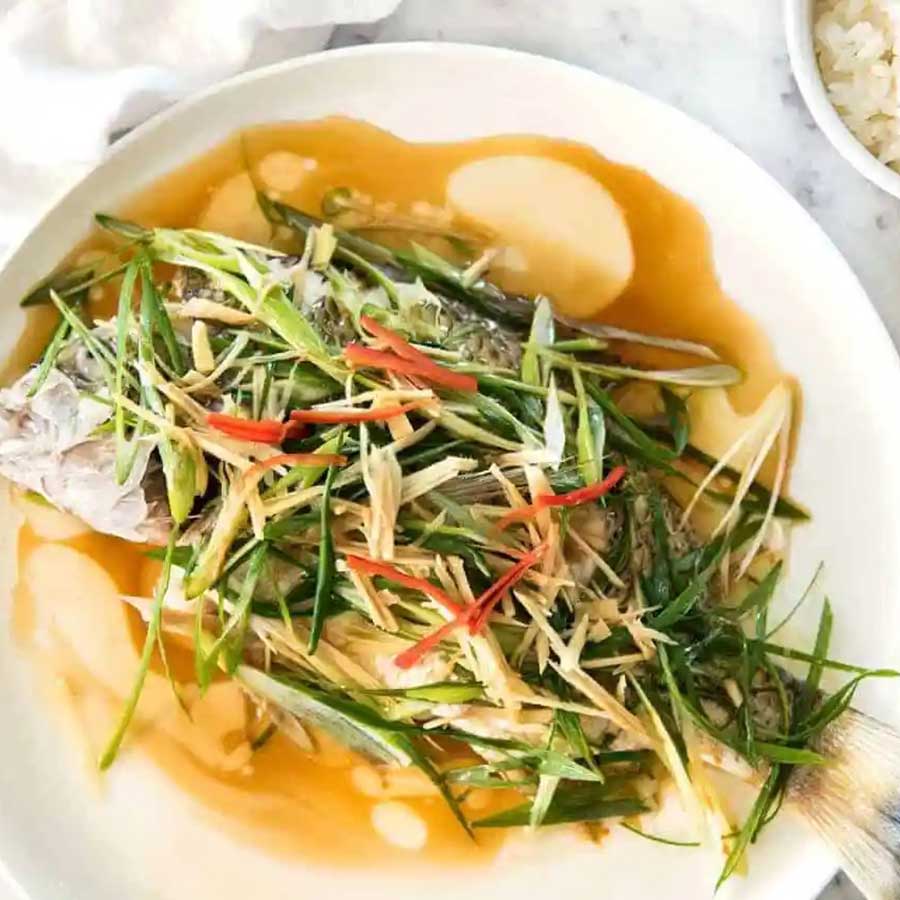
Dumplings — Richness
Chinese dumplings, with their boat-shaped, oval design and turned up ends that resemble Chinese silver ingot coins, have become part of folklore. It is said that the more you eat during New Year festivities, the greater your chances are to gain wealth in the upcoming year.
Dumplings are a savory delight that tantalize the taste buds! A thin, elastic dough encases alluring fillings of ground pork, shrimp, fish or vegetables. Whether boiled, steamed or fried – no matter how you prepare them – dumplings will have your stomach rumbling in appreciation!
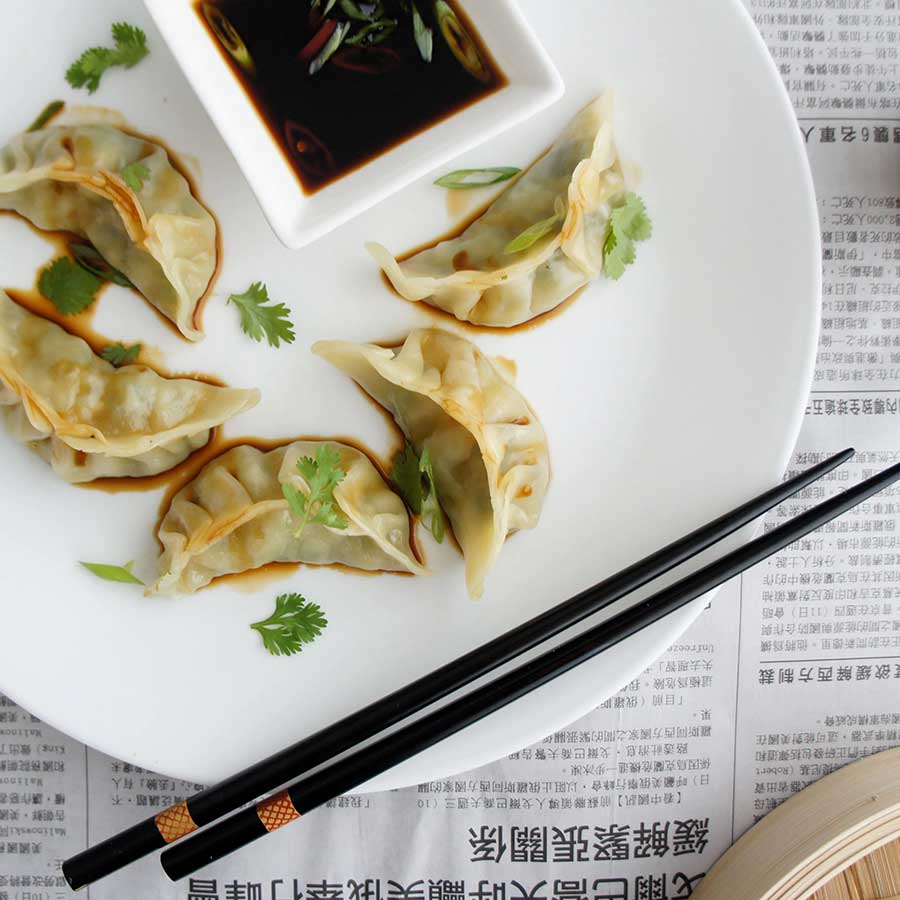
Whole Chicken — Completeness
Not only is chicken a homophone for ji (吉, meaning ‘good luck’ and ‘prosperity’), but it’s significance of unity and wholeness make it an ideal dish at family gatherings. The serving of the entire bird – head to feet – symbolizes not just togetherness, but also marks a satisfying beginning and ending to the year.
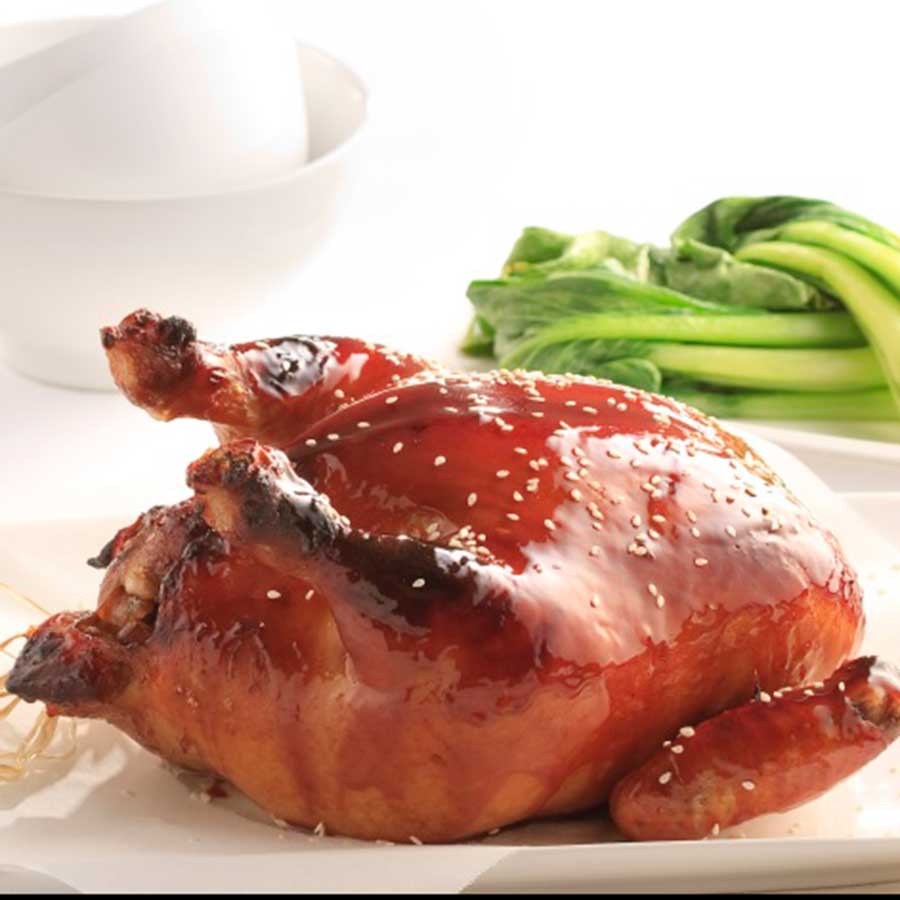
Lion’s Head Meatballs — ‘Family Unity’
During the Chinese New Year, Lion’s Head Meatballs (狮子头, shīzitóu) are a beloved delicacy from Shanghai. Crafted with homemade pork and steamed or braised to perfection, these meatballs boast juiciness and tenderness; topped off with vegetables in a sweet-sticky sauce for an unforgettable flavor! Named after its unique shape resembling the head of a lion – which symbolizes strength in Chinese culture – this mouthwatering dish celebrates ‘family unity’ as each round morsel is meant to represent such bond within households.

Prawns — Happiness
Cantonese people enjoy prawns as part of their Chinese New Year celebrations, not just because it’s delicious but also due to its symbolism. The Cantonese word for prawn, ‘ha’ sounds like laughter and thus conveys feelings of liveliness, joyfulness and luck – all positive signs for the upcoming year!
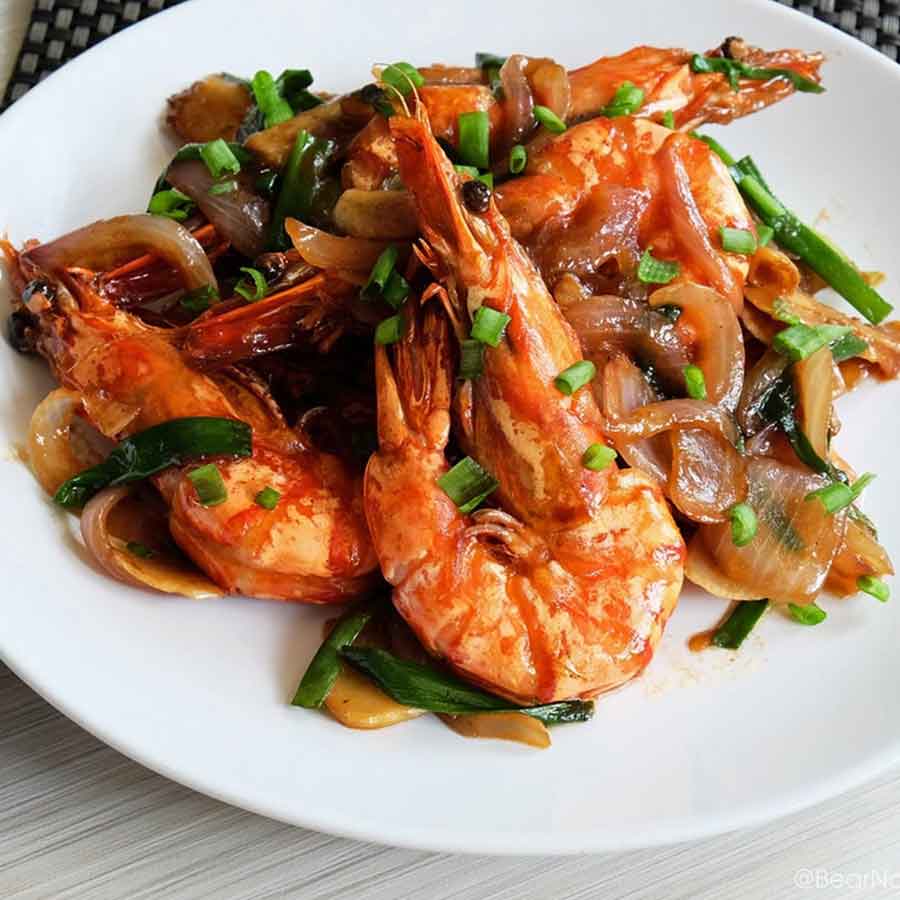
Vegetables — Spring
Chinese New Year’s family dinner is incomplete without vegetables, for they not only provide nourishment but also signify new beginnings. Symbolism of renewal, energy, progress and wealth are all embodied in the traditional feast staples – representative of fresh starts and infinite possibilities!
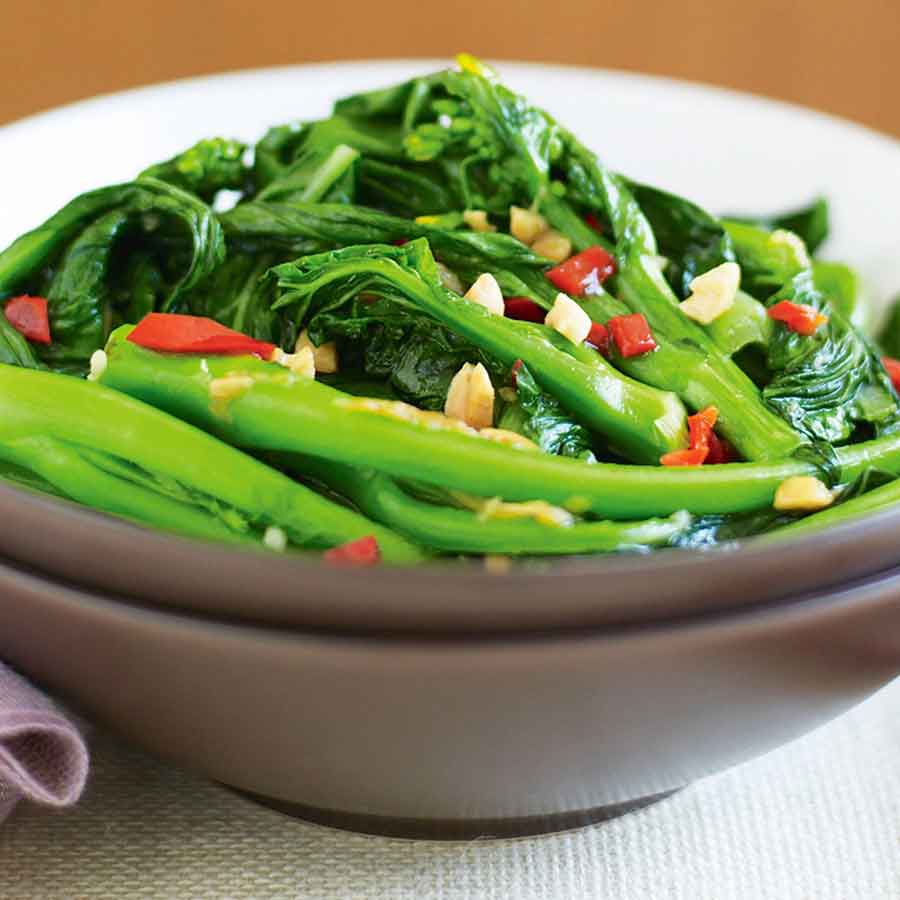
Noodles — Longevity
Eating Longevity Noodles (长寿面 Chángshòu Miàn /chung-show myen/), whose length and unbroken preparation reflect the eater’s life, is an age-old tradition to signify a desire for long life.

Rice Cake – Achieve a Higher Income and Position
Symbolizing growth and progress, glutinous rice cake (年糕 Niángāo /nyen-gaoww/) is a special dish consumed on Chinese New Year’s Eve. The phonetic similarity between its name and the phrase “getting higher year-on-year” has given it an even more significant meaning to Chinese people; as they consider rising in status as indicative of success in business and life improvement. This treat consists primarily of sticky rice, sugar, chestnuts, Chinese dates, and lotus leaves – sure to be enjoyed by all who partake!
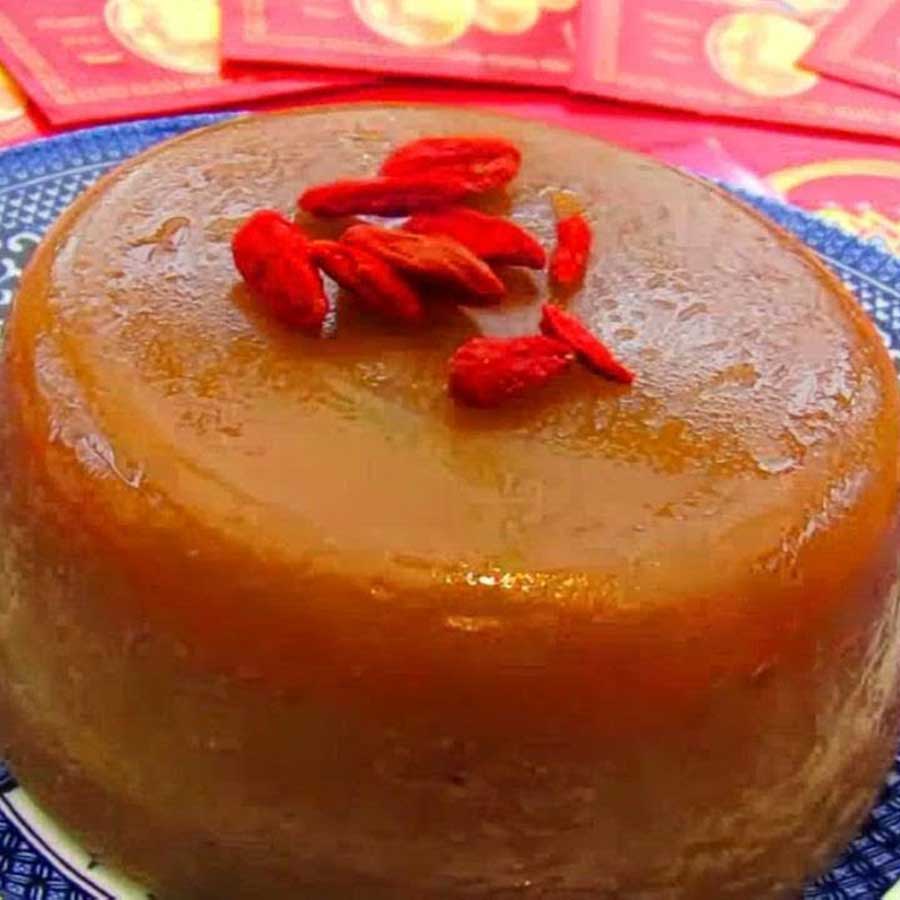
Get a Chinese Private Chef to cook authentic Chinese Share Plates
If you’re looking for a more authentic Chinese New Year feast, why not hire a Chinese chef? They’ll bring all the know-how and expertise needed to create an amazing spread – from traditional classics to contemporary delicacies. With their help, your family and friends will be able to indulge in delectable dishes overflowing with history, symbolism and cultural significance – a feast for the eyes as well as stomach! With all these delicious options, we hope you can find some inspiration for your Chinese New Year meal. Bon Appétit!
Happy Lunar New Year! 新年快乐!(Xīn Nián Kuài Lè!)